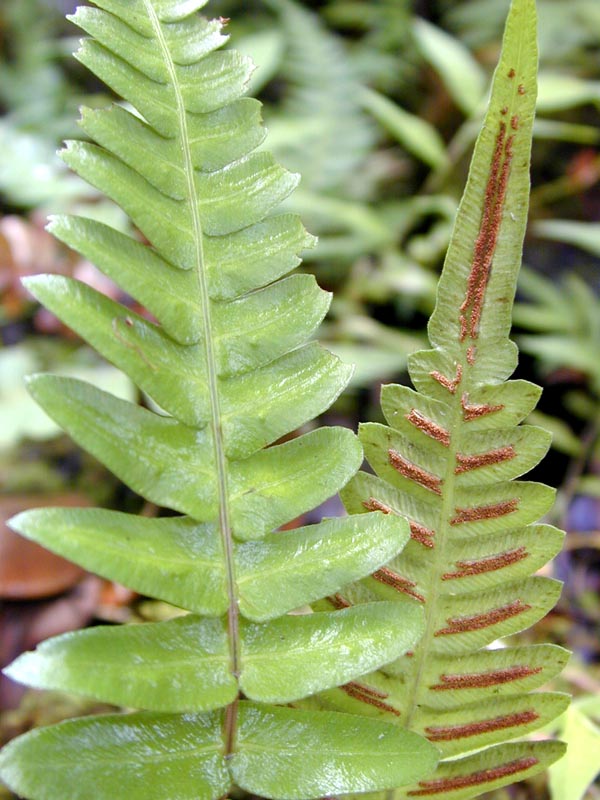|
Trab
A trab is a structural element within a sponge formed by the fusion of dendroclones. In the Anthaspidellidae, when spicules Spicules are any of various small needle-like anatomical structures occurring in organisms Spicule may also refer to: *Spicule (sponge), small skeletal elements of sea sponges *Spicule (nematode), reproductive structures found in male nematodes ( ... (usually dendroclones) connect at their tips to form a ladder-like structure, trabs may be formed. Oxeas are sometimes employed in the central rod. Trabs have a feather-like structure, or may form rods. Trabs are usually regularly spaced, usually at sub-millimetric intervals. Further dendroclones may interconnect adjacent trabs, forming ladder-like structures. The presence and alignment of trabs is often related to the internal structure of canals within sponges. References Sponge anatomy {{sponge-stub ... [...More Info...] [...Related Items...] OR: [Wikipedia] [Google] [Baidu] |
Sponge
Sponges, the members of the phylum Porifera (; meaning 'pore bearer'), are a basal animal clade as a sister of the diploblasts. They are multicellular organisms that have bodies full of pores and channels allowing water to circulate through them, consisting of jelly-like mesohyl sandwiched between two thin layers of cells. Sponges have unspecialized cells that can transform into other types and that often migrate between the main cell layers and the mesohyl in the process. Sponges do not have nervous, digestive or circulatory systems. Instead, most rely on maintaining a constant water flow through their bodies to obtain food and oxygen and to remove wastes. Sponges were first to branch off the evolutionary tree from the last common ancestor of all animals, making them the sister group of all other animals. Etymology The term ''sponge'' derives from the Ancient Greek word ( 'sponge'). Overview Sponges are similar to other animals in that they are multicell ... [...More Info...] [...Related Items...] OR: [Wikipedia] [Google] [Baidu] |
Anthaspidellid
Anthaspidellidae is an extinct family of sponges whose dendroclone spicules form ladder-like trab A trab is a structural element within a sponge formed by the fusion of dendroclones. In the Anthaspidellidae, when spicules Spicules are any of various small needle-like anatomical structures occurring in organisms Spicule may also refer to: *S ...s. References Sponge families Tetractinomorpha {{demosponge-stub ... [...More Info...] [...Related Items...] OR: [Wikipedia] [Google] [Baidu] |
Sponge Spicule
Spicules are structural elements found in most sponges. The meshing of many spicules serves as the sponge's skeleton and thus it provides structural support and potentially defense against predators. Sponge spicules are made of calcium carbonate or silica. Large spicules visible to the naked eye are referred to as megascleres, while smaller, microscopic ones are termed microscleres. The composition, size, and shape of spicules are major characters in sponge systematics and taxonomy. Overview Sponges are a species-rich clade of the earliest-diverging (most basal) animals. They are distributed globally, with diverse ecologies and functions, and a record spanning at least the entire Phanerozoic. Most sponges produce skeletons formed by spicules, structural elements that develop in a wide variety of sizes and three dimensional shapes. Among the four sub-clades of Porifera, three ( Demospongiae, Hexactinellida, and Homoscleromorpha) produce skeletons of amorphous silica and ... [...More Info...] [...Related Items...] OR: [Wikipedia] [Google] [Baidu] |
Pinnate
Pinnation (also called pennation) is the arrangement of feather-like or multi-divided features arising from both sides of a common axis. Pinnation occurs in biological morphology, in crystals, such as some forms of ice or metal crystals, and in patterns of erosion or stream beds. The term derives from the Latin word ''pinna'' meaning "feather", "wing", or " fin". A similar concept is "pectination," which is a comb-like arrangement of parts (arising from one side of an axis only). Pinnation is commonly referred to in contrast to "palmation," in which the parts or structures radiate out from a common point. The terms "pinnation" and "pennation" are cognate, and although they are sometimes used distinctly, there is no consistent difference in the meaning or usage of the two words.Jackson, Benjamin, Daydon; A Glossary of Botanic Terms with their Derivation and Accent; Published by Gerald Duckworth & Co. London, 4th ed 1928 Plants Botanically, pinnation is an arrangement o ... [...More Info...] [...Related Items...] OR: [Wikipedia] [Google] [Baidu] |
Royal Ontario Museum
The Royal Ontario Museum (ROM) is a museum of art, world culture and natural history in Toronto, Ontario, Canada. It is one of the largest museums in North America and the largest in Canada. It attracts more than one million visitors every year, making the ROM List of most-visited museums by region, the most-visited museum in Canada. The museum is north of Queen's Park (Toronto), Queen's Park, in the University of Toronto district, with its main entrance on Bloor Street, Bloor Street West. Museum station (Toronto), Museum subway station is named after the ROM and, since a 2008 renovation, is decorated to resemble the institution's collection at the platform level. Established on April 16, 1912, and opened on March 19, 1914, the museum has maintained close relations with the University of Toronto throughout its history, often sharing expertise and resources. The museum was under the direct control and management of the University of Toronto until 1968, when it became an independe ... [...More Info...] [...Related Items...] OR: [Wikipedia] [Google] [Baidu] |


